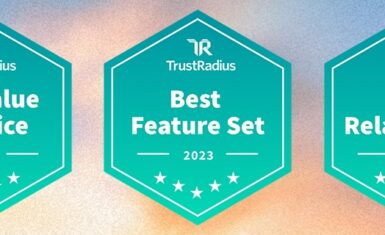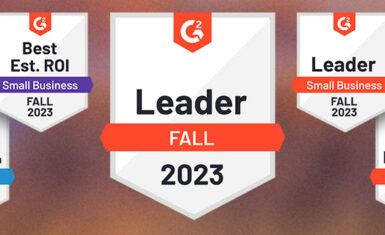We take IT equipment efficiency very seriously at Alludo. This Earth Day, we’re taking a close look at the ways we make sure we’re being part of the solution—and not part of the global e-waste problem.
Every year, more than 50 million metric tons of e-wasteis generated. That’s pretty shocking. We know that corporations are often major contributors to the e-waste problem, but this is one trend we don’t want to be part of. Instead, we’ve established creative solutions to ensure that we’re as responsible as possible when it comes to both the generation and disposal of e-waste.
That last part is important: it’s about reducing how much e-waste we produce and making sure that we’re doing the right thing with any e-waste that we do produce. In celebration of Earth Day, we had the chance to chat with two Alludo employees who are leading experts on this IT equipment efficiency. Here’s what they had to say.
“The right amount at the right time”: Dialing in IT equipment efficiency
Mia Solomakhin is Director of Global Cloud Engagement at Alludo. She’s passionate about IT equipment efficiency, and has had a front-row seat to the evolution of e-waste and data storage over her career.
Reducing the production of e-waste is a beneficial byproduct of Mia’s role. “Data centers used to be the default, but they were never designed to be an effective use of energy or materials,” Mia explains. “They’re designed to provide maximum availability and productivity.” In the data center-focused landscape, business needs take precedence over everything. Leaders are pressured to make sure they have more than enough storage to accommodate any business need. “And they’re guessing at how much,” Mia says. “It’s more art than science. They’ll say, oh, we need this much and probably 20% more. Are we still under? Okay, let’s double it.’”
This approach means building capacity for peak times and possibilities, rather than averages and realities. Not only is it wildly inefficient, but it’s also a security risk. When the goal is maximum capacity and operationalizing as much equipment as possible, Mia says it can mean having computers sitting under desks that are dubbed “servers” and loaded with mission-critical information. There’d often be a full set of servers plus backup servers (and maybe multiple layers of backup servers).
Efficiently optimizing cloud and physical storage
Now there’s a major movement to the cloud for storage. Mia and her team aren’t just dropping everything into the cloud, but rather leveraging the cloud as efficiently and securely as possible, while optimizing physical server use.
In a hybrid environment, when there are still data servers in use, the team makes sure those servers are optimally located and operated, making minimal use of land and resources. And in the case of physical servers, Mia and her team won’t tolerate layers of redundancy. The team works to build an infrastructure that doesn’t need a permanent footprint for backup. “If a machine runs at 2% capacity, 99% of the time, I only need to address that 1% spike,” Mia says. “I don’t need or want it to run at 100% capacity 100% of the time.” She structures systems to be dynamic and fluid, upscaling when needed and then shrinking when they’re not needed.
Additional strategies include a global perspective, leveraging power from parts of the world that are in off-peak hours. And, increasingly, there is a push toward outsourcing and/or renting cloud server space as much as possible. As Mia explains it, using cloud-native providers that use automation can be ideal. When utilized properly, Alludo can achieve far higher efficiency and lower carbon footprint without sacrificing security or effectiveness, freeing up critical cycles.
With an eye toward the future, Alludo envisions a world where virtual workplaces—and solar power—are the standard. Virtual workspaces are already gaining traction—and Alludo is at the forefront of enabling virtualization via our popular Parallels products. Talk about being part of the solution!
Giving equipment new life
Of course, the world isn’t yet to the point of universal virtual workspaces. Tangible equipment is still essential for operations, and that means making smart choices about managing and disposing of that equipment. Alexander Brunner is Director of Global Business Continuity at Alludo, and part of that continuity is making strategic, ethical choices about equipment.
Alexander and his team start by ensuring that we don’t take on more equipment than we need in the first place. Alexander explains that it used to be common for companies to have multiple devices available for each employee, especially in the tech space when they might want to rely mostly on a preferred device but need another one when using certain required applications. Fortunately, solutions like Parallels are eliminating the need for multiple devices just for the sake of running multiple operating systems. “We don’t get a separate laptop or PC for different needs,” he says. “We spin up a virtual machine on their single device, reducing the overall physical footprint.” And it’s critical to note that Parallels is making this major change possible for companies around the world, exponentially increasing Alludo’s global impact on efforts to reduce carbon footprint.
It’s not just the number of devices that create demands on the environment, but also the energy those devices use. While it might be popular to use the most powerful device on the market, regardless of your role, it’s not an eco-friendly choice. Modern devices are so advanced, just compared to a handful of years ago, that few people truly need maximum power and resolution to do their jobs well. Those who work with our beloved graphic design solutions may warrant a high-res display and larger monitor, but people in other roles can thrive on standard hardware, standard monitor sizes, and full-HD resolution that is plenty clear enough. Alexander also strives to deploy laptops instead of desktops, since they typically use far less power (and are great for our remote-first, flexible approach to work!).
When it’s time to dispose of a piece of equipment, Alexander and his team has a win-win-win plan in place. First, all equipment gets scraped of any company data, using a fully compliant process. Then it’s time for new life. Whenever possible, the first choice is to donate used equipment. Equipment that still has life left goes to organizations where they can be put into action, supplying people with much-needed resources to support education, literacy, connection, entrepreneurship, and more.
While still-functioning equipment gets new life, sometimes it’s time to end-of-life a piece of equipment. Perhaps the equipment would need a sufficient investment to get it up and running again, which isn’t an efficient use of resources. When appropriate, Alludo may resell equipment or parts in order to preserve funds for purchasing new equipment—keeping overall costs down. When equipment can’t be used, donated, repaired, or sold, only then is it disposed of—but get this, it’s still not simply headed to the garbage. Alludo partners with a service provider that responsibly reuses e-waste.
These are just two of the reasons Alludo is feeling a major sense of pride this Earth Day. We know we have work to do, but we’re doing it. And we’re glad to have you as part of the solution.
Learn more about how Alludo is securing a sustainable future.





